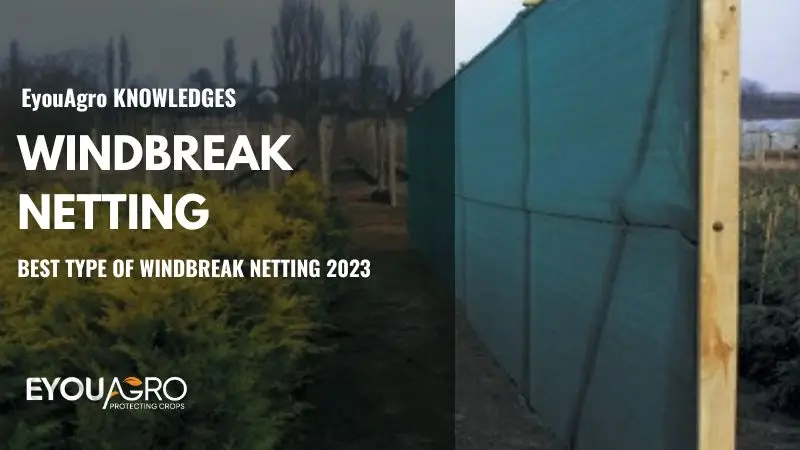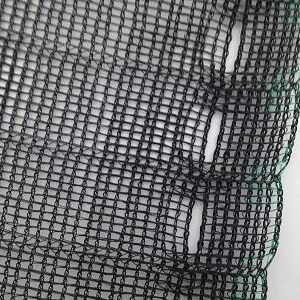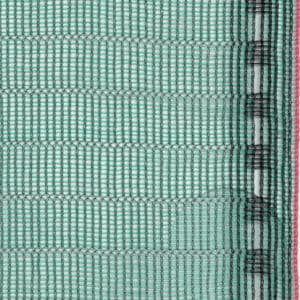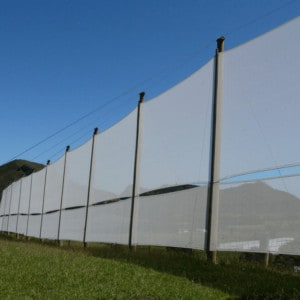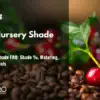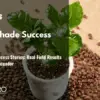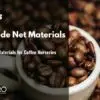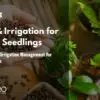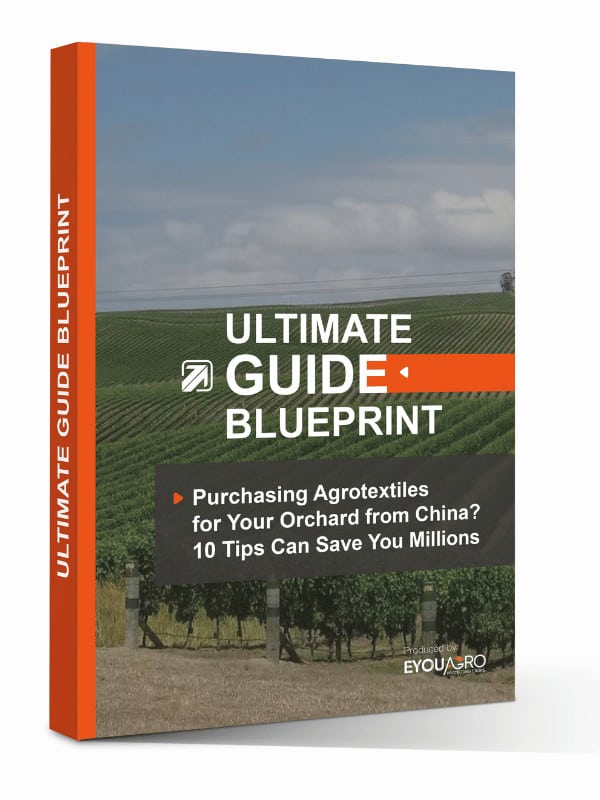Wind can be highly destructive to farms and gardens, destroying plants with little to no warning. This problem is especially prevalent in flat areas, yet they are the most fertile areas.
Fortunately, installing windbreak netting, and a good one for that matter will help keep wind damage at bay. A windbreak net will decrease wind damage by reducing the velocity of the wind. It will change its course, therefore, keeping your crops safe.
But then, which is the best type of windbreak netting?
Here is a comprehensive guide with all the information you’ll need to help you select standard wind protection netting.

What is Windbreak Netting Material?
Manufacturers make windbreaks out of high-density polyethylene or high-density propylene primarily because they are both durable. However, most manufacturers prefer to use polyethylene since it produces sturdy netting.
High-Density Polyethylene
Polyethylene is a thermoplastic polymer whose structure is crystalline. It has vast applications, and its use in manufacturing windbreak netting is just a drop in the ocean.
The remarkable attributes of polyethylene that make it suitable for use in manufacturing windbreak nets include:
- It has excellent durability capabilities.
- It is rot, corrosion, and chemical resistant.
- It is waterproof.
- It is eco-friendly.
- It is tear and wear-resistant.
High-Density Polypropylene
Polypropylene is a thermoplastic addition polymer whose resourcefulness is astounding. Besides its use in manufacturing windbreak netting, it is also put to use when making things such as hinges, plastic parts, and textiles.
Some of its noteworthy qualities that contribute to its versatility include:
- It is highly flexible since it is semi-crystalline.
- It is highly resistant to moisture.
- It is electricity resistant; thus, it’s an excellent insulator.
- It is chemical resistant to a vast range of acids and bases.
- It has reasonable pricing.
- It is easy to repair in case of damage.
Wind protection netting made out of high-density polypropylene is soft( less rigid compared to one made out of HDPE).
Types of Windbreak Netting
A variety of netting exist; however, the common ones include:
Plastic Windbreak Netting
As the name suggests, manufacturers make this type of windbreak netting using plastic. And not just any other plastic, high-density polyethylene (HDPE) plastic.
This type of windbreak netting has hexagonal apertures, which allow just about enough wind to pass through. Therefore, you can use it to protect your plants, animals, and seedlings against harsh winds.
Additionally, these hexagonal openings allow sunlight to seep through for two reasons; to ensure the protected plants continue to receive enough light and to prevent condensation drops from forming on the netting’s underside.
This type of windbreak netting will keep crop temperatures low during the day and close to the ambient during the night.
Plastic windbreak netting further subdivides into:
- Knitted windbreak netting – This type of wind block netting offers 35% – 75% wind protection.
- Flexible windbreak netting – This type of wind block netting offers 50% – 55% wind protection.
- Extruded windbreak netting – This type of wind block netting offers 50% – 60% wind protection.
Metal Windbreak Panels and Walls
Metal windbreak panels and walls are better suited for large yards, power plants, coal mines, and industrial areas than gardens and farms.
A metal windbreak wall is put to use whenever the need to control wind and dust pollution for bulky materials. This wind-blocking technique reduces up to 65%- 90%wind and dust primarily because it has perforations that reduce the speed of the wind.
Since various metals exist, metal windbreak panels and walls are specifically made out of steel plates, galvanized plates, stainless steel, color-coated sheet, or nick-plated bright sheet.
Metal windbreak panels and walls subdivide into the following four categories:
- Single peak windbreak panels
- Two peaks windbreak panels
- Three peaks windbreak panels
- Five peaks windbreak panels
Features of metal windbreak panels and walls include:
- Its structural development is not complicated, thus making it easy to install.
- It is rust, corrosion, and acid-resistant.
- It can withstand extremely high temperatures.
- It is tough and durable. Thus, it can serve you for a period of up to 10 years.
- It has a flat and smooth surface that you can incorporate any color of choice by painting it.
How to Choose The Best Netting Material
Choosing anything and not only a wind protection netting product can be tricky. Consider the following things to help you pick the best netting material available in the market.
- Quality
A high-quality windbreak netting is made from HDPE plastic mesh which doubles up as windbreak netting or shade net. It offers your crops maximum protection from the scorching sun, strong winds, and hail damage. Plastic windbreak netting is UV stabilized to enable it to withstand harsh weather conditions. It also does not tear easily, so it will serve you for long.
So, when buying windbreak netting be on the lookout for such qualities. Buying HDPE plastic windbreak netting is helpful because you can use it in a greenhouse or the open for different purposes.
- Durability
Your choice of windbreak netting should be durable. One major factor that contributes to the durability factor is material.
Depending on your needs and preferences, you can choose one made of high-density polyethylene or high-density polypropylene. Both are durable materials, just that nettings made from high-density polyethylene are sturdy while nettings made of high-density polypropylene are soft.
- UV Stabilization
A wind protection netting that is UV stabilized can withstand
long-term degradation as a result of UV light.
Manufacturers incorporate UV stabilization into a fabric by adding the stabilizer into the fabric’s resin.
UV stabilizers prevent damage by absorbing and screening out UV energy.
- Environmental Friendliness
If you are using a netting product that degrades the environment, then it means that it is equally not good enough to protect your plants. Windbreak netting made from HDPE plastic mesh is eco-friendly.
Therefore, go for environmentally friendly windbreak netting. Wind-blocking netting products made of high-density propylene and polyethylene are ecologically friendly.
- Versatility
Who wouldn’t like to have a single product/item that accomplishes more than one job?
Similarly, choose a windbreak netting product that will offer your plants additional benefits aside from the intended one. Some of these extra benefits could include shading, ventilation, and soil erosion reduction.
Installation
If you find a windbreak netting that satisfies all your needs and is easy to install as well, go for it.
Wind protection nettings are temporary structures that you’ll need to remove as soon as their intended use is over. Therefore, you’ll need one that you can put up and remove easily from time to time or when the need arises.
Conclusion
Windbreak nettings play a considerable role when it comes to garden protection. Make sure you purchase a heavy-duty net that can withstand it all.
EyouAgro, a leading windbreak netting company can help you get your windbreak netting. If you have any questions about the wind block netting, drop us an email at info@eyouagro.com or visit our website at www.eyouagro.com.

